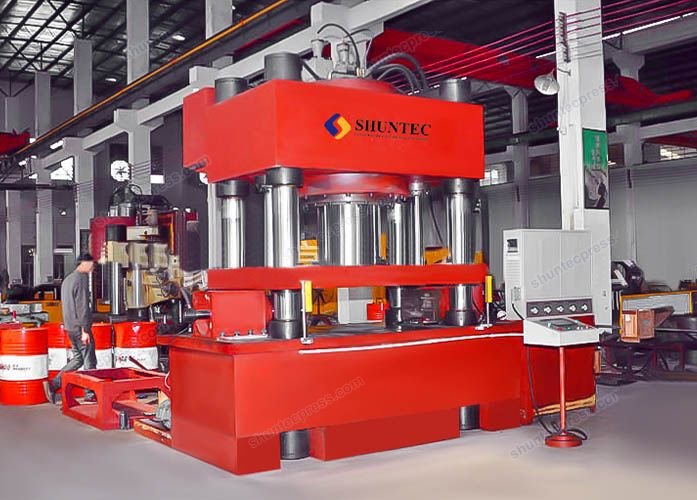


In recent years, the automobile manufacturing industry has raised the requirements of energy-saving and lightweight, and hydroforming presses have been more and more widely used in this industry by virtue of a series of advantages. Compared with ordinary processing technology, hydroforming technology can not only form and replicate parts, but also improve their quality and service life, reduce working procedures, and lower costs. As the lightweight of automobiles has become a trend, hydroforming presses will undoubtedly play an important role.
According to the characteristics of automobile processing, hydroforming presses can generally be divided into pipe fitting hydroforming presses and sheet metal hydroforming presses.
There Are Four Types Of Applications Of Hydroformed Pipe Fittings In Automobiles
1. Exhaust system parts, such as intake manifolds, exhaust tailpipes, etc. If this kind of shape tube is produced using traditional processing methods, more procedures are required, which means higher costs and additional weight. If they are produced by hydroforming technology, they can be formed at one time and thus save workforce and materials;
2. Load-bearing parts, such as frame longitudinal beams, rear axle beams, etc. These kinds of parts have high requirements for strength and rigidity. In the past, they are produced by the method of stamping and welding, which not only requires a large workforce but is difficult to ensure the uniformity of the load-bearing performance. By comparison, the hydroforming technology can not only avoid the above shortcomings but also improve fatigue strength. For example, the rigidity of the hydroformed radiator bracket can be increased by 39% in the vertical direction and 50% in the horizontal direction.
3. Engine and power system parts, such as suspension beams, hollow camshafts, etc. In the past, machining was mainly used in order to ensure stable transfer of loading capacity, and most of the processed materials were solid blanks. This unavoidably added to the weight of the car and was contrary to the current lightweight requirements of the automobile industry. However, the hydroforming press can have it both ways, ensuring the loading capacity, while meeting the requirements of lightweight.
4. Structural parts, such as windshield brackets, space frameworks, etc. This kind of part is not only supposed to play a supporting role but also required to reduce the weight of the car as much as possible. Hydroforming technology can achieve this goal.
In addition, as the shapes of automobile body panels are becoming more and more complex, and a large number of new materials such as aluminum and magnesium are used to produce them, sheet hydroforming press has incomparable advantages over traditional sheet forming press, and has gradually attracted the attention of the industry across the board. It can not only form parts with complex shapes but also have high precision and a smooth surface. It can also reduce the number of parts and molds required, and thus greatly reduce processing costs.
In short, hydroforming presses have many obvious advantages in automobile manufacturing, such as reducing weight, saving materials, improving the quality of parts, reducing the number of procedures, parts, and molds required, and reducing production costs, and their application in the industry has become popular.

